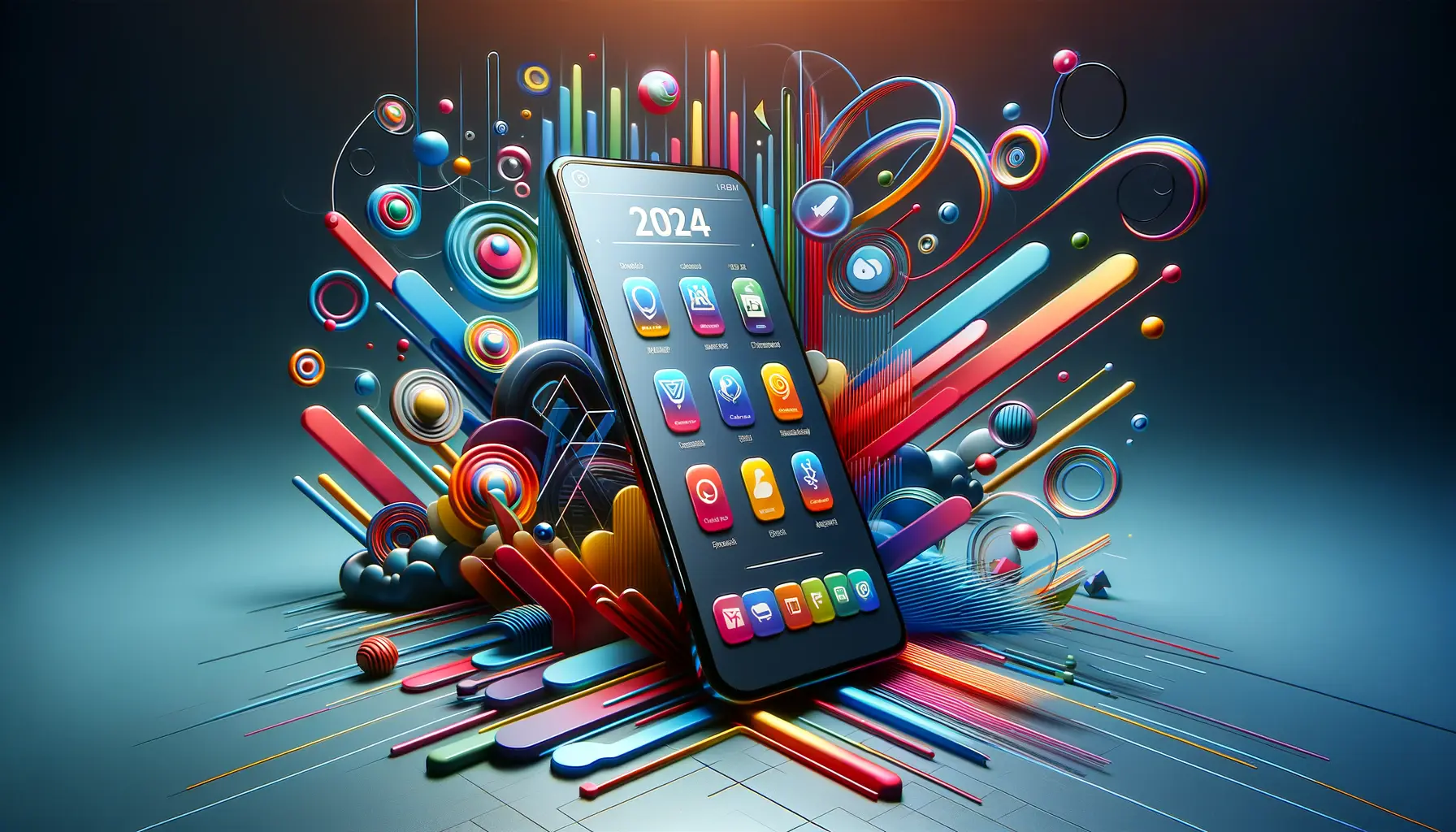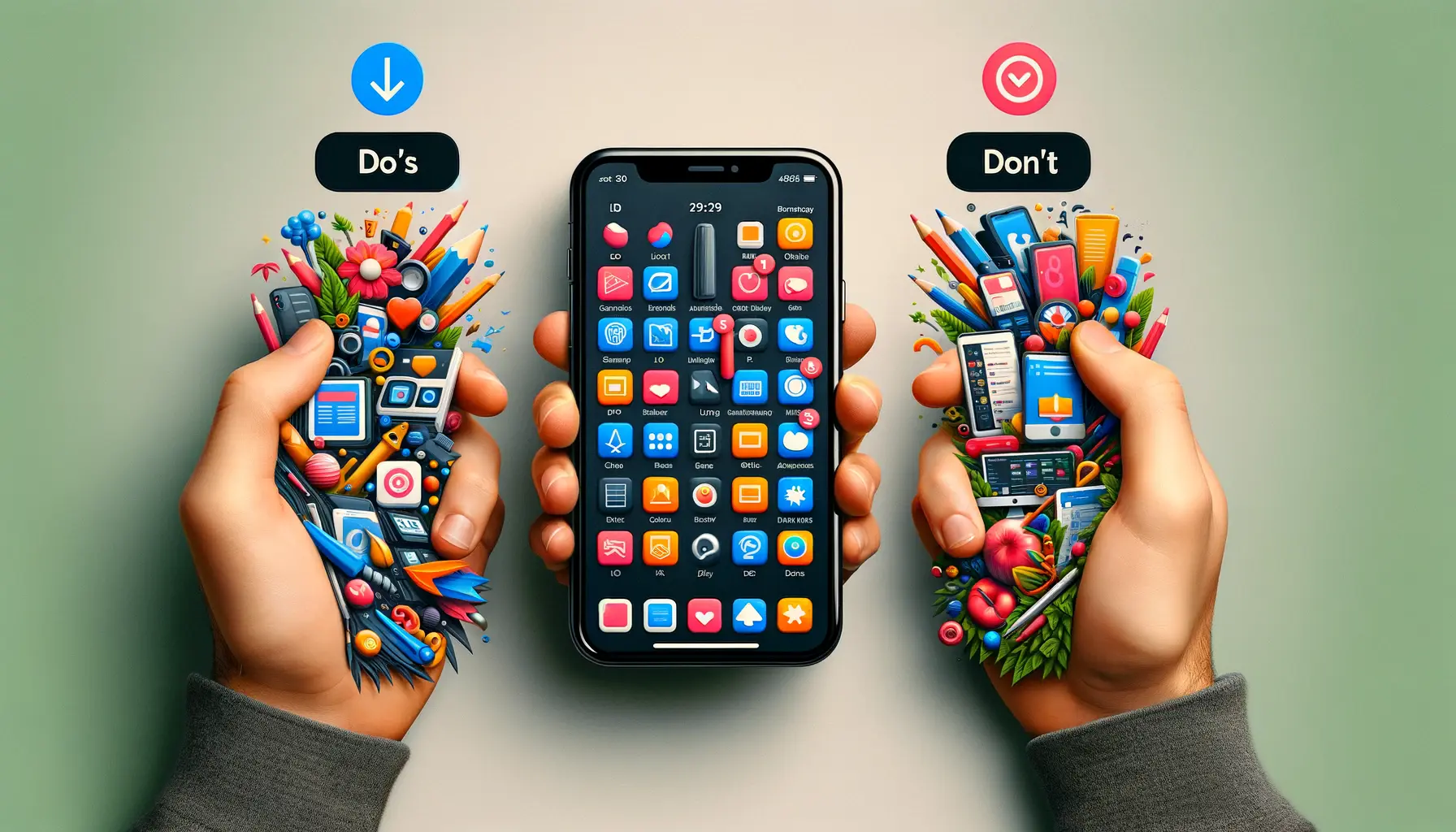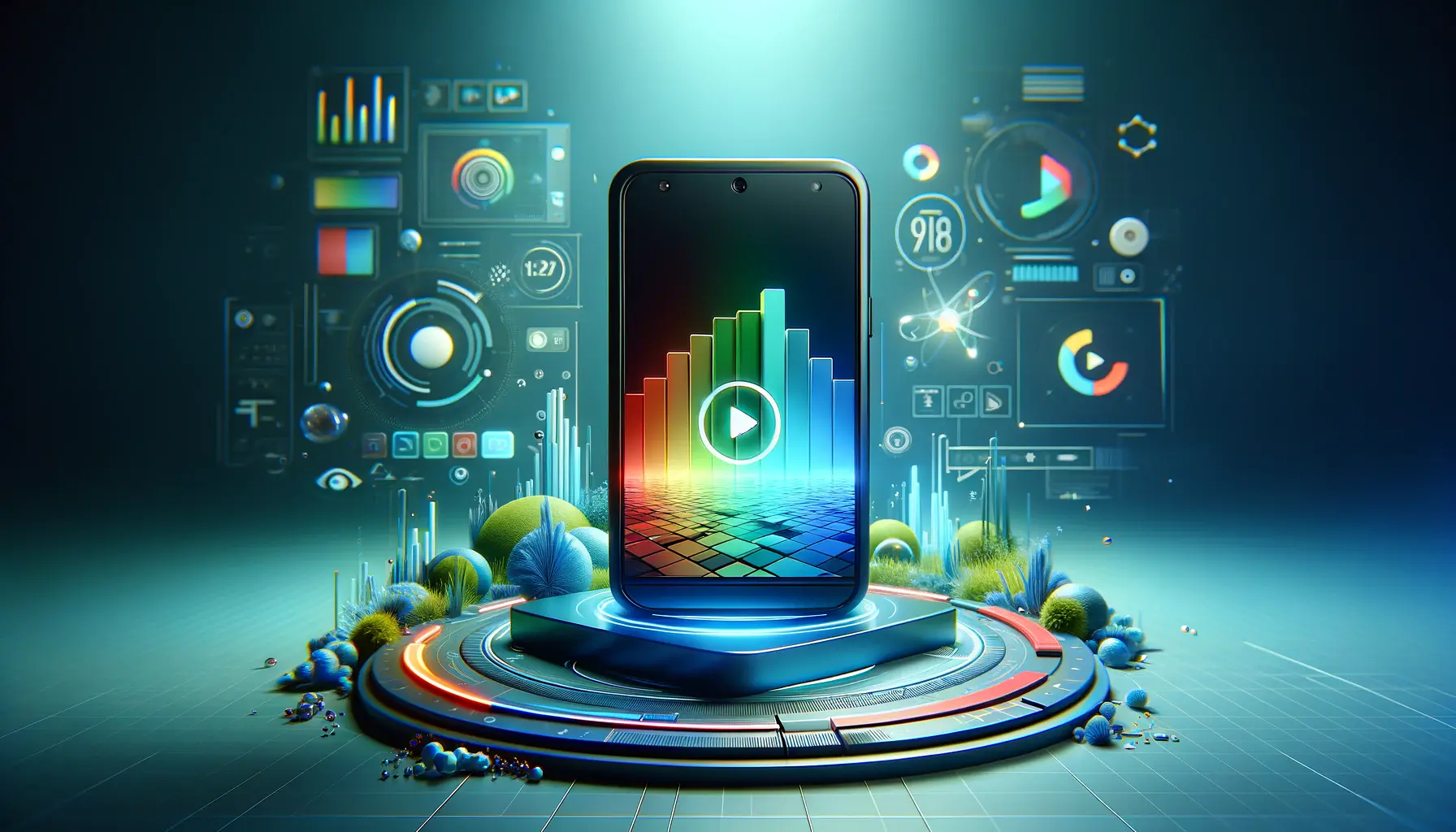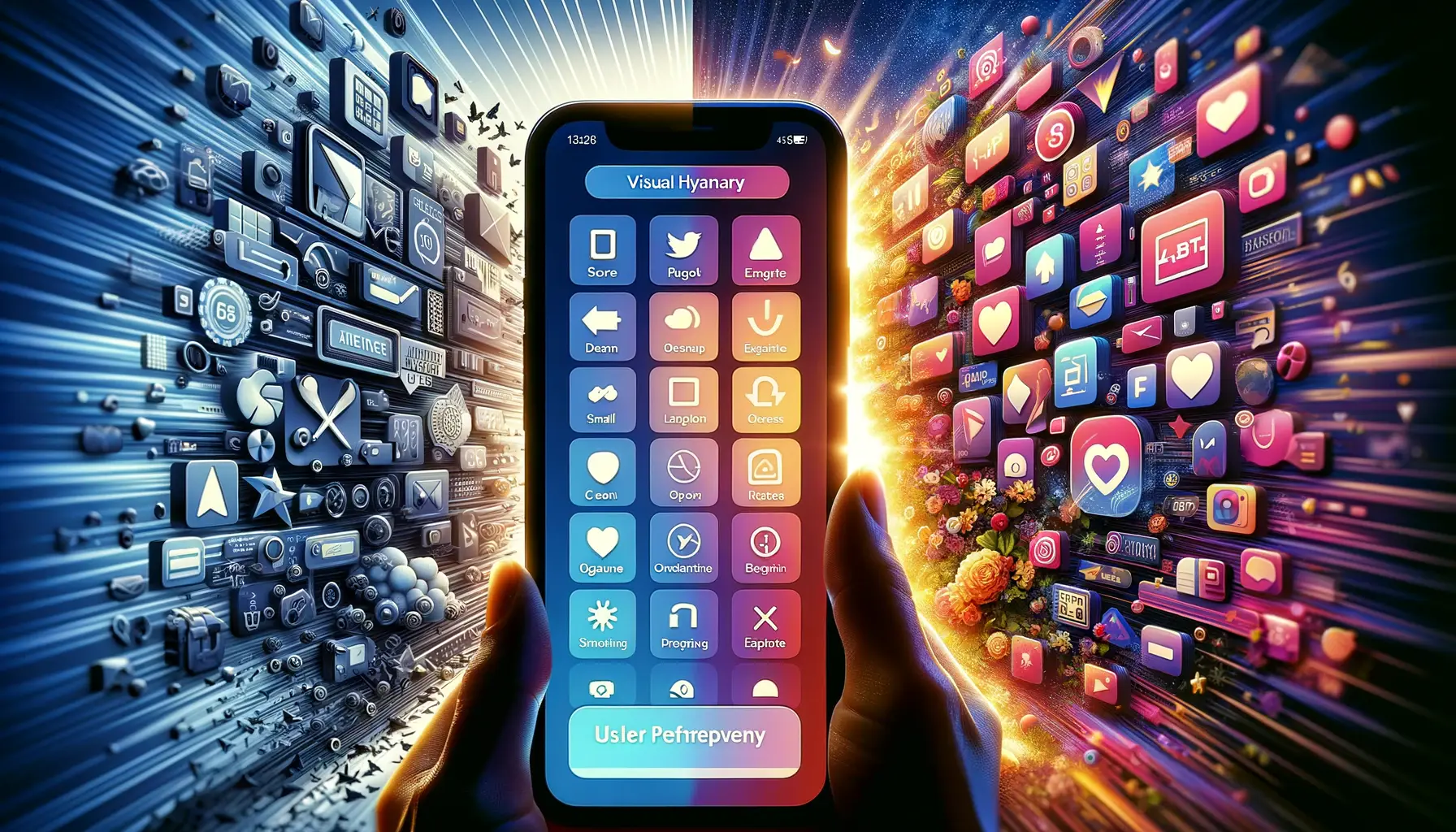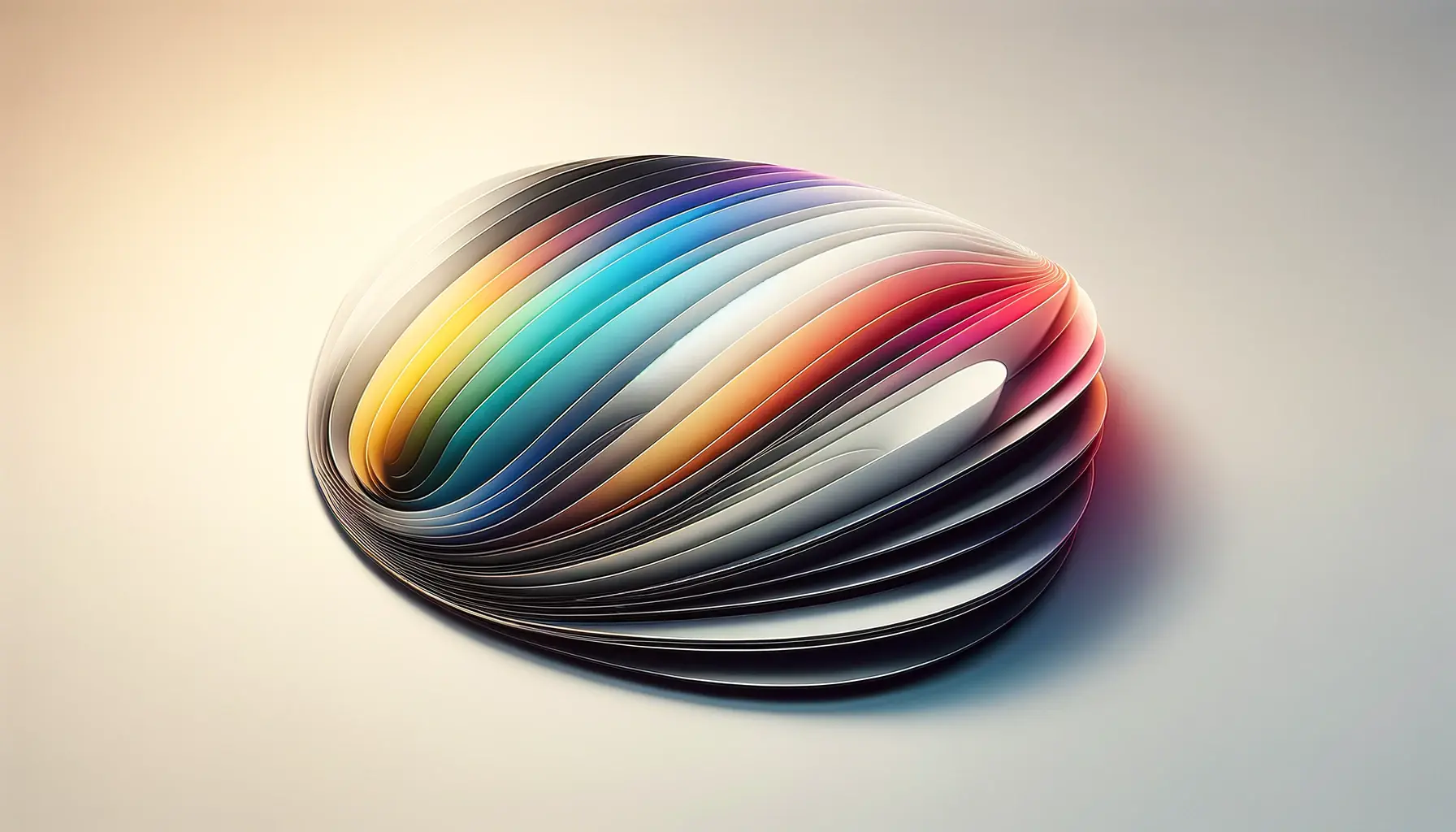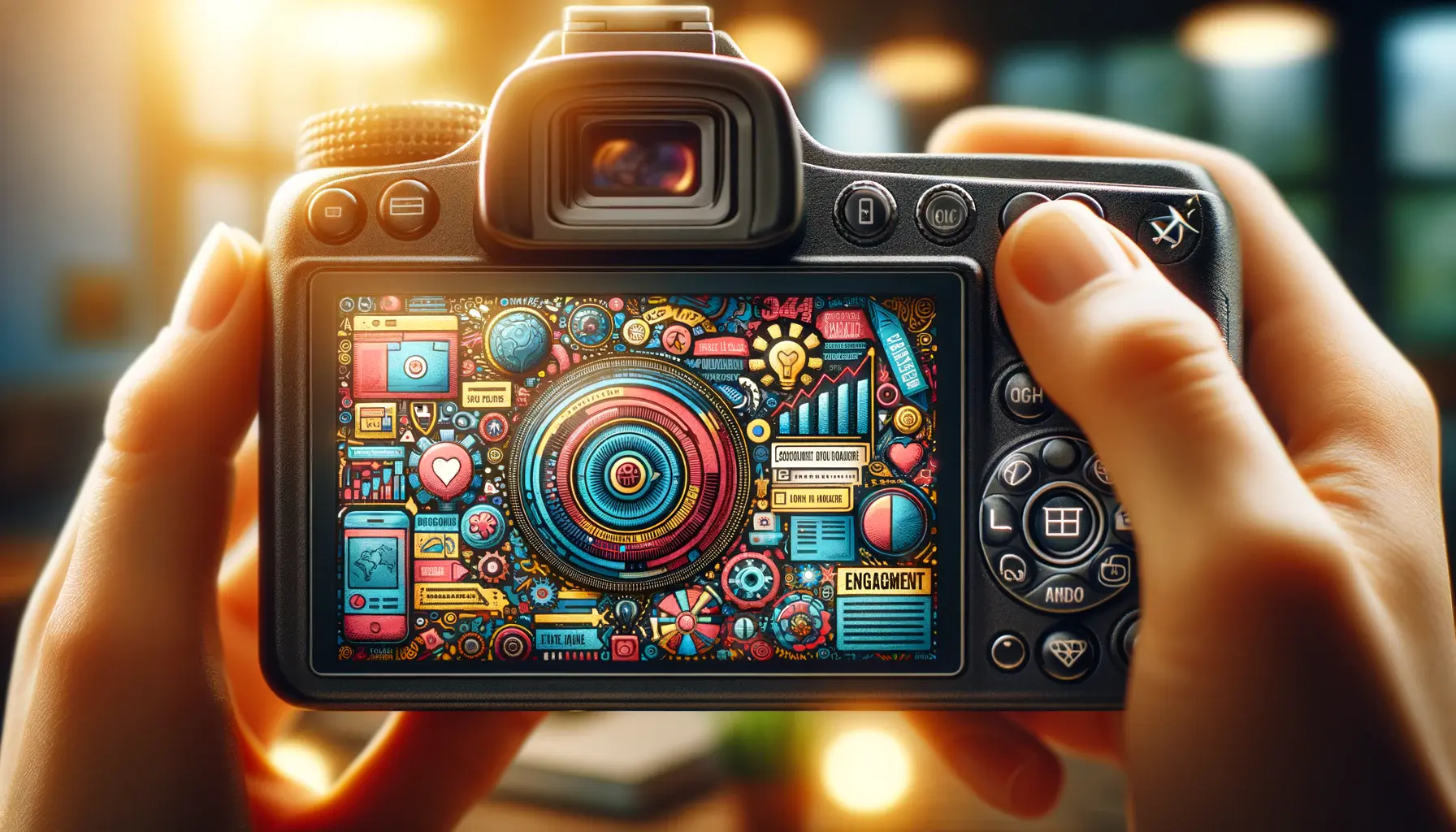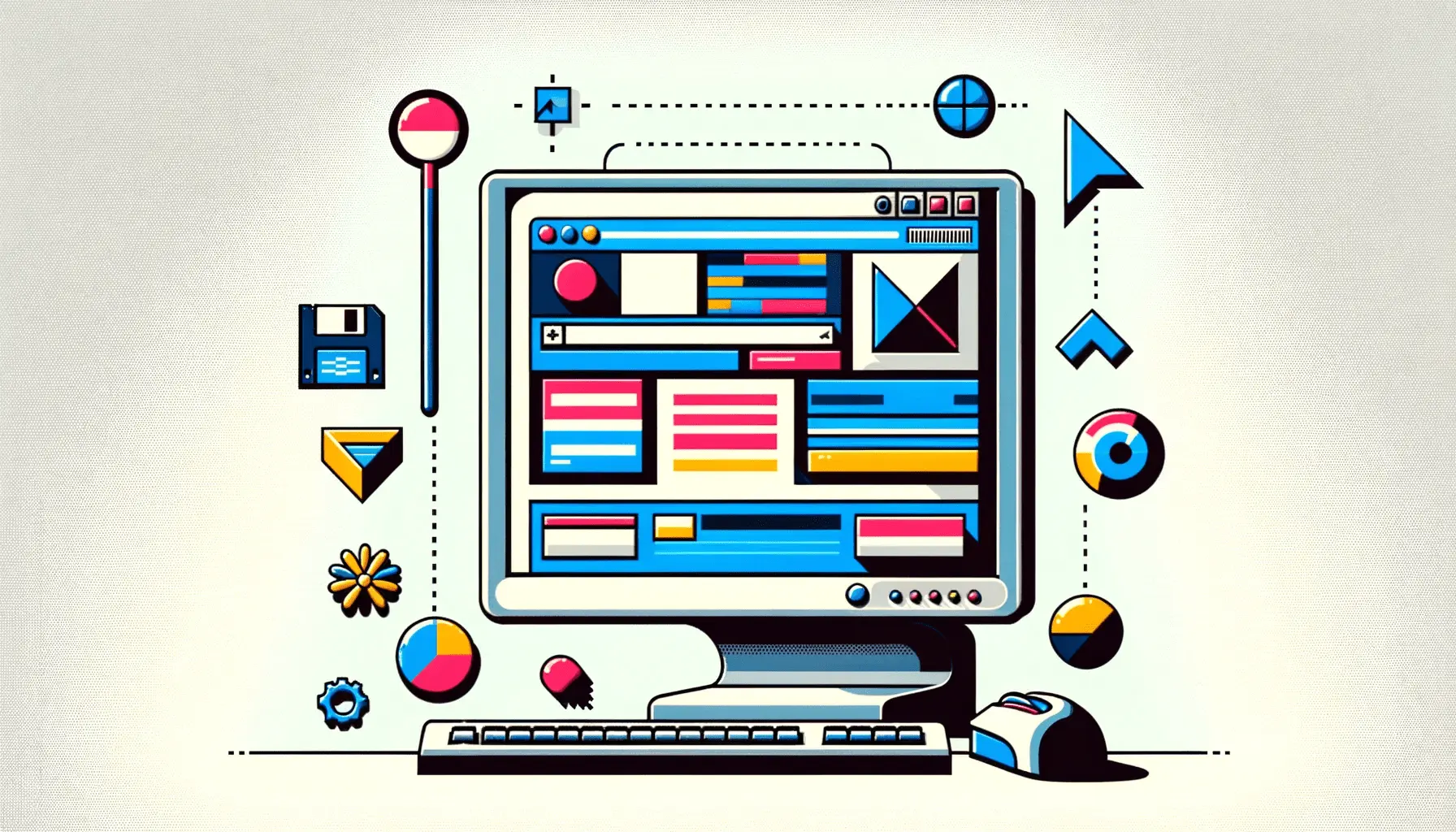App Store Optimization (ASO) has always been the cornerstone of a successful app’s journey, enabling developers and marketers to enhance their app’s visibility in an increasingly crowded marketplace.
As we edge closer into 2024, the spotlight on ASO, especially the design and strategy behind app screenshots, is more intense than ever.
These visual elements are not just about aesthetics; they are a pivotal part of communicating an app’s core value to potential users at a glance, influencing their decision to download.
The evolution of screenshot design reflects broader technological advancements and changing user expectations.
Today’s users demand not only functionality but also an engaging visual experience that resonates with their needs and preferences.
The future of ASO lies in leveraging these trends to create compelling, informative screenshots that tell a story, engage users, and ultimately drive downloads.
This article dives deep into the latest trends, strategies, and best practices in ASO screenshot design, guiding developers and marketers towards a more strategic approach in showcasing their apps.
- Understanding the Importance of Screenshot Design in ASO
- Emerging Trends in Screenshot Design for 2024
- Best Practices for Creating Compelling ASO Screenshots
- Incorporating Storytelling into Screenshot Design
- Leveraging Color Psychology in Screenshot Design
- Optimizing Screenshots for Different Devices and Platforms
- Utilizing Data and Analytics to Refine Screenshot Strategy
- Empowering Your App’s Journey with Strategic ASO Screenshot Design
- ASO Screenshot Design FAQs
Understanding the Importance of Screenshot Design in ASO
First Impressions Count
In the world of app stores, first impressions are crucial.
A user’s decision to download an app often hinges on the initial glance at the app’s screenshots.
These visual elements serve as a window into the app’s functionality and aesthetic, offering a snapshot of what users can expect.
A well-designed set of screenshots can effectively communicate an app’s unique value proposition, distinguishing it from competitors and compelling users to explore further.
With the average attention span dwindling, the ability to instantly capture and retain user interest through screenshots has become an art.
Developers and marketers must meticulously craft these images to ensure they are visually appealing, informative, and reflective of the app’s branding.
This strategic visual storytelling can significantly impact an app’s download rates and overall success in the digital marketplace.
Optimizing Screenshots for Maximum Engagement
The optimization of screenshot design goes beyond mere aesthetic appeal.
It involves a deep understanding of target audiences, market trends, and the specific features that make an app stand out.
Incorporating elements such as vibrant colors, clear and concise messaging, and visuals that depict real-world use cases can greatly enhance a screenshot’s effectiveness.
Furthermore, aligning screenshot design with current design trends and user preferences can significantly boost engagement and conversions.
Engaging screenshots often employ strategies like showcasing social proof, highlighting awards or recognitions, and using lifestyle imagery that users can relate to.
This approach not only captures attention but also builds trust and credibility.
Developers and marketers must continuously A/B test different designs, layouts, and messaging to discover what resonates best with their audience, ensuring their screenshots remain effective and relevant over time.
Screenshots are not just pictures; they are the first touchpoint of your app’s narrative and value, making their optimization a critical component of ASO success.
Emerging Trends in Screenshot Design for 2024
The landscape of ASO screenshot design is continually evolving, shaped by technological advancements and changing user expectations.
As we move into 2024, several emerging trends are set to redefine how app developers and marketers approach screenshot design.
These trends not only reflect the dynamic nature of user engagement but also offer insights into creating more impactful and appealing visual representations of apps.
Here are some of the key trends to watch out for:
The future of ASO: Integration of AR and VR Elements
Augmented Reality (AR) and Virtual Reality (VR) technologies are becoming increasingly mainstream, offering new ways for users to interact with apps.
Screenshots that showcase an app’s AR or VR capabilities can significantly enhance its appeal, providing a glimpse into immersive experiences.
This trend encourages developers to highlight innovative features through screenshots that capture the futuristic aspect of their apps.
Dynamic and Interactive Screenshots
The future of ASO screenshots lies in dynamic and interactive elements.
While static images have been the norm, the push towards screenshots that users can interact with—such as scrollable galleries or mini-games within the screenshot itself—is gaining traction.
This approach not only engages users but also provides a more comprehensive understanding of the app’s features and usability.
- Customization and Personalization: Tailoring screenshots to user preferences and behaviors can dramatically increase relevance and engagement. Personalized screenshots based on user demographics, interests, or even past behaviors are set to become more prevalent, offering a customized visual experience that resonates with individual users.
- Storytelling Through Screenshots: Narrating a story through a series of screenshots can effectively convey an app’s purpose and value. This trend involves designing screenshots that, when viewed in sequence, tell a compelling story about the app, its features, and how it enhances users’ lives.
- Minimalist Design: The appeal of simplicity cannot be understated. Minimalist screenshot designs that focus on the core features and benefits of an app, free from clutter and excessive details, are becoming more popular. This trend aligns with the broader movement towards clean, user-friendly app interfaces.
As we embrace these emerging trends, it’s clear that the future of screenshot design is geared towards creating more engaging, informative, and immersive visual experiences. By staying ahead of these trends, developers and marketers can ensure their apps stand out in a competitive marketplace.
Best Practices for Creating Compelling ASO Screenshots
To navigate the competitive landscape of the app stores, adopting best practices in screenshot design is crucial.
These practices are not just about adhering to the latest trends but also about understanding the core principles that make screenshots effective.
Here’s a detailed look at some of the best practices that can help developers and marketers create screenshots that not only attract but also convert potential users into loyal customers.
Understanding User Psychology: The foundation of a compelling screenshot lies in understanding what motivates your target audience.
This involves researching and analyzing user needs, preferences, and pain points.
By aligning your screenshot design with these insights, you can create visuals that resonate deeply with potential users, driving higher engagement and download rates.
- Focus on Key Features: Highlight the unique features and benefits of your app. Use screenshots to showcase what sets your app apart from competitors, focusing on functionalities that solve users’ problems or enhance their daily lives.
- Employ High-Quality Imagery: Clarity and quality cannot be compromised. Ensure that your screenshots are high resolution and free of any pixelation or distortion. High-quality visuals not only look professional but also reflect the caliber of your app.
- Utilize A/B Testing: Continuously test different versions of your screenshots to determine which designs, layouts, and messaging resonate best with your audience. A/B testing allows you to make data-driven decisions, optimizing your screenshots for maximum impact.
Localization and Culturalization
Adapting your screenshots to cater to different markets is another critical practice.
Localization involves translating text and adapting visuals to meet language preferences, while culturalization goes deeper, adjusting content to align with cultural norms and values.
This dual approach ensures your app is accessible and appealing to a global audience, potentially increasing your app’s reach and downloads.
Leveraging Social Proof
Incorporating elements of social proof, such as user testimonials, ratings, or media mentions, within your screenshots can significantly boost credibility.
Potential users are more likely to download an app that others have vouched for, making social proof a powerful tool in your ASO strategy.
By adhering to these best practices, developers and marketers can craft screenshots that not only capture attention but also convincingly convey the app’s value, leading to increased downloads and user engagement.
Incorporating Storytelling into Screenshot Design
One of the most effective ways to engage potential users and communicate your app’s value is through storytelling.
This narrative approach goes beyond showcasing features, aiming to evoke emotions and connect on a deeper level with the audience.
Incorporating storytelling into your screenshot design can transform static images into a compelling narrative that guides users through the unique journey your app offers.
Start with the User’s Problem: Begin your screenshot sequence by highlighting a common problem or need that your target audience faces.
This sets the stage for your app as the solution, creating a relatable context that draws users in.
Utilize imagery and text that clearly depict the problem, making it easy for users to see themselves in the scenario.
- Showcase the Solution: Follow up with screenshots that illustrate how your app addresses the problem introduced at the beginning. Use visuals that demonstrate the app in action, providing a clear understanding of its functionality and benefits. Highlighting key features within this narrative context makes them more impactful.
- Highlight the Outcome: Conclude your sequence with screenshots that depict the positive change or outcome users can expect by using your app. Whether it’s increased productivity, entertainment, or social connectivity, showing the end result of using your app can motivate downloads.
- Emphasize Emotional Benefits: Beyond functional benefits, focus on the emotional rewards users will gain. This could include feelings of accomplishment, joy, or belonging. Visuals and text that convey these emotions can make your app more appealing and memorable.
Creating a Visual Flow
Ensure that your screenshots create a seamless visual flow that guides users through the narrative without confusion or disruption.
This might involve using consistent design elements, color schemes, and transitions between screenshots.
A well-orchestrated visual flow not only enhances the storytelling but also improves the overall aesthetic appeal of your app’s presentation.
Use Real-World Contexts
Integrating real-world contexts into your screenshots can make your narrative more relatable and tangible.
Showcasing your app’s usage in everyday situations or specific scenarios can help users envision how it fits into their lives.
This approach bridges the gap between the digital product and the physical world, enhancing the storytelling impact.
Storytelling in screenshot design is an art that requires careful planning and execution. By crafting a narrative that resonates with your audience, you can turn your app’s screenshots into a compelling story that captivates and convinces users to embark on the journey with your app.
Leveraging Color Psychology in Screenshot Design
The strategic use of color in ASO screenshots can significantly influence user perception and behavior.
Color psychology, the study of how colors affect human emotions and actions, offers valuable insights for app marketers and developers aiming to make their apps more appealing.
By understanding the psychological effects of different colors, you can design screenshots that not only attract attention but also evoke the desired emotional response from potential users.
Colors can convey a wide range of emotions and messages, from trust and security to excitement and creativity.
Choosing the right color palette for your screenshots is therefore crucial in aligning with your app’s brand identity and the feelings you want to instill in your audience.
For instance, blue often represents trustworthiness and reliability, making it a popular choice for finance and productivity apps.
On the other hand, vibrant colors like orange or yellow can evoke energy and creativity, suitable for lifestyle or entertainment apps.
- Match Colors with Your App’s Theme: Ensure that the colors used in your screenshots match your app’s overall theme and purpose. This coherence strengthens your brand identity and enhances user recognition.
- Consider Cultural Differences: Be aware of how color perceptions can vary across different cultures. What is considered positive and inviting in one culture may have negative connotations in another, affecting your app’s global appeal.
- Use Contrast to Highlight Important Elements: Employing contrasting colors can make critical elements, such as call-to-action buttons or key features, stand out in your screenshots. This not only draws attention to important information but also improves the overall readability and effectiveness of your visual presentation.
Emotional Impact of Color Choices
When selecting colors for your screenshots, consider the emotional impact you aim to achieve.
Warm colors can stimulate excitement and action, making them effective for gaming or fitness apps.
Cooler tones, offering a sense of calm and professionalism, are ideal for apps focused on meditation, health, or business services.
The emotional impact of your color choices can significantly affect user engagement and conversion rates.
Testing and Optimization
Given the subjective nature of color perception, it’s essential to test different color schemes and analyze their performance.
A/B testing can reveal which color combinations resonate most with your target audience, allowing you to optimize your screenshot design for better results.
Continuously refining your color strategy based on user feedback and engagement metrics ensures your app remains visually appealing and relevant over time.
The psychology behind color choices in ASO screenshot design is a powerful tool that, when used wisely, can enhance user attraction and engagement. By carefully selecting and testing colors, you can create a visual experience that not only looks great but also connects with users on an emotional level.
Optimizing Screenshots for Different Devices and Platforms
With a plethora of devices and platforms available to users, optimizing your app screenshots for various screen sizes and resolutions is imperative.
This customization ensures that your app’s visual appeal remains consistent across all user touchpoints, providing a seamless experience that can significantly influence download decisions.
Understanding the technical and aesthetic nuances of different devices and platforms can make your screenshots more effective and accessible to a broader audience.
To begin with, the dimensions and aspect ratios of screenshots should be tailored to fit the specifications of different devices, from smartphones and tablets to wearables.
This adaptation prevents your screenshots from appearing stretched or compressed, maintaining the integrity of your visual design.
Additionally, considering platform-specific guidelines and user expectations can further refine your approach, ensuring your screenshots resonate with the target audience’s preferences and habits.
- Adhere to Platform Guidelines: Each app store has its own set of guidelines for screenshot dimensions, file formats, and other specifications. Following these guidelines closely ensures your screenshots are displayed correctly and meet the platform’s quality standards.
- Design for Target Devices: Consider the most popular devices among your target audience when designing your screenshots. Catering to the specific screen sizes and resolutions of these devices can enhance the visual experience for the majority of your users.
- Highlight Platform-Specific Features: If your app offers features or functionalities unique to certain platforms or devices, make sure to highlight these in your screenshots. This not only showcases your app’s versatility but also appeals to users of those specific platforms.
Impact of Device Diversity on User Perception
The diversity of devices and platforms presents both challenges and opportunities in ASO screenshot optimization.
By effectively addressing the variations in screen sizes, resolutions, and platform guidelines, you can create screenshots that accurately represent your app’s value across all user touchpoints.
This attention to detail can improve user perception, making your app more attractive and trustworthy, thereby increasing the likelihood of downloads.
Continuous Testing and Adaptation
As new devices and platform updates are released, continuous testing and adaptation of your screenshots are crucial.
What works today may not be as effective tomorrow, necessitating an agile approach to screenshot optimization.
Regularly updating your visuals to align with the latest trends, devices, and user preferences can keep your app relevant and appealing in a rapidly evolving digital landscape.
Optimizing app screenshots for different devices and platforms is a dynamic process that requires ongoing attention and refinement. By embracing device diversity and adapting your visuals accordingly, you can ensure that your app resonates with users across the digital ecosystem, driving downloads and engagement.
Utilizing Data and Analytics to Refine Screenshot Strategy
In the quest for the perfect ASO screenshot strategy, data and analytics serve as invaluable allies.
By analyzing user interactions, download rates, and engagement metrics, developers and marketers can gain deep insights into what resonates with their audience.
This data-driven approach allows for continuous refinement of screenshot designs, ensuring they remain effective and aligned with user preferences over time.
Key performance indicators (KPIs) such as click-through rates (CTR), conversion rates, and user feedback provide a clear picture of how screenshots are performing.
Tracking these metrics over time helps identify trends and patterns, highlighting opportunities for optimization.
Moreover, advanced analytics tools can offer deeper insights into user behavior, enabling a more nuanced understanding of how screenshots influence app discovery and downloads.
- Segment User Data: Analyzing data based on user segments—such as demographics, device types, or geographic locations—can reveal specific preferences and behaviors. Tailoring your screenshots to appeal to these segments can significantly enhance their effectiveness.
- Conduct A/B Testing: A/B testing different screenshot variations is a critical component of a data-driven strategy. By comparing the performance of different designs, you can identify what works best and make informed decisions about your screenshot optimization efforts.
- Monitor Competitor Performance: Keeping an eye on how your competitors’ screenshots perform can provide valuable insights. Analyzing their strategies and user responses can help you identify best practices and potential areas for differentiation.
Leveraging User Feedback for Continuous Improvement
User feedback, whether through app reviews, surveys, or social media, is a goldmine of information.
It offers direct insights into how your screenshots are perceived by users and what they expect from your app.
Actively seeking and incorporating user feedback into your screenshot design process can foster a user-centric approach, enhancing satisfaction and loyalty.
Adapting to Evolving User Trends
As user preferences and digital trends evolve, so too must your screenshot strategy.
Utilizing data and analytics allows you to stay ahead of these changes, ensuring your screenshots remain relevant and appealing.
Regularly updating your visuals based on analytical insights and user feedback ensures your app continues to engage and attract new users in a competitive marketplace.
A data-driven approach to screenshot optimization is essential for staying competitive in the app stores. By leveraging data, analytics, and user feedback, developers and marketers can create screenshots that effectively capture attention, convey value, and drive downloads.
Empowering Your App’s Journey with Strategic ASO Screenshot Design
As we navigate the evolving landscape of the app stores, the significance of App Store Optimization, particularly ASO screenshot design, cannot be overstated.
The journey towards mastering ASO is complex and multifaceted, demanding a blend of creativity, strategic thinking, and data-driven decisions.
The future of ASO is bright, with emerging trends and technologies offering new avenues to captivate and engage potential users.
By embracing these opportunities, developers and marketers can significantly enhance their app’s visibility, appeal, and ultimately, its success.
Charting the Course for ASO Excellence
The roadmap to ASO excellence is marked by several key milestones, each contributing to the holistic optimization of your app’s presence in the app stores.
From understanding the fundamental importance of screenshot design to leveraging the latest trends and best practices, every step is pivotal.
The journey involves:
- Recognizing the critical role of screenshots in making a stellar first impression and driving user downloads.
- Adapting to and leveraging emerging trends in screenshot design, such as the integration of AR/VR elements and dynamic interactivity, to stay ahead of the curve.
- Implementing best practices for screenshot creation, focusing on quality, relevance, and user engagement to craft compelling visual narratives.
- Incorporating storytelling into screenshot design to weave a captivating tale that highlights your app’s features and benefits.
- Utilizing color psychology effectively to evoke the desired emotional response and enhance the visual appeal of your screenshots.
- Optimizing screenshots for diverse devices and platforms to ensure a consistent and engaging user experience across all touchpoints.
- Employing data and analytics to refine and evolve your screenshot strategy, ensuring it remains aligned with user preferences and market trends.
As the digital ecosystem becomes increasingly competitive, the ability to stand out hinges on your app’s ASO strategy, particularly the design and optimization of your screenshots.
The journey to ASO success is ongoing, requiring continuous innovation, testing, and adaptation.
Yet, the rewards—increased visibility, user engagement, and downloads—are well worth the effort.
The Path Forward
Looking ahead, the future of ASO and screenshot design is undeniably promising.
The integration of new technologies, alongside a deeper understanding of user behavior and preferences, paves the way for even more effective and engaging app presentations.
For developers and marketers, the key to harnessing this potential lies in staying informed, agile, and user-focused.
By doing so, you can not only adapt to the changing landscape but also shape it, driving your app towards unparalleled success.
In conclusion, the journey of App Store Optimization, particularly through strategic screenshot design, is a testament to the power of visual storytelling and user engagement in the digital age.
As we move forward, the fusion of creativity, analytics, and innovation will continue to be the cornerstone of ASO success.
Embrace this journey with a spirit of exploration and excellence, and watch as your app transcends boundaries, reaching new heights in the app stores.
Boost your mobile app's success with our guaranteed App Store Optimization (ASO) service. Leave it to the experts!
ASO Screenshot Design FAQs
Dive into the most commonly asked questions about ASO screenshot design to enhance your app’s presence in the app stores effectively.
They serve as the first visual contact between your app and potential users, significantly influencing their decision to download.
Though it varies by platform, using the maximum allowed can showcase your app’s features and benefits comprehensively.
A good ASO screenshot clearly conveys your app’s value, features vibrant colors, is high-resolution, and aligns with user expectations.
Yes, optimizing screenshots for various devices ensures they look appealing and maintain quality across all screen sizes.
Color choices can evoke specific emotions, making your app more appealing by aligning the screenshot’s vibe with your app’s purpose.
Absolutely. Storytelling through screenshots can guide potential users through your app’s experience, enhancing engagement.
Critical. A/B testing allows you to determine which screenshots drive the most downloads, helping optimize your app’s presentation.
Yes, regularly updating screenshots keeps your app listing fresh and relevant, adapting to changing trends and user feedback.

